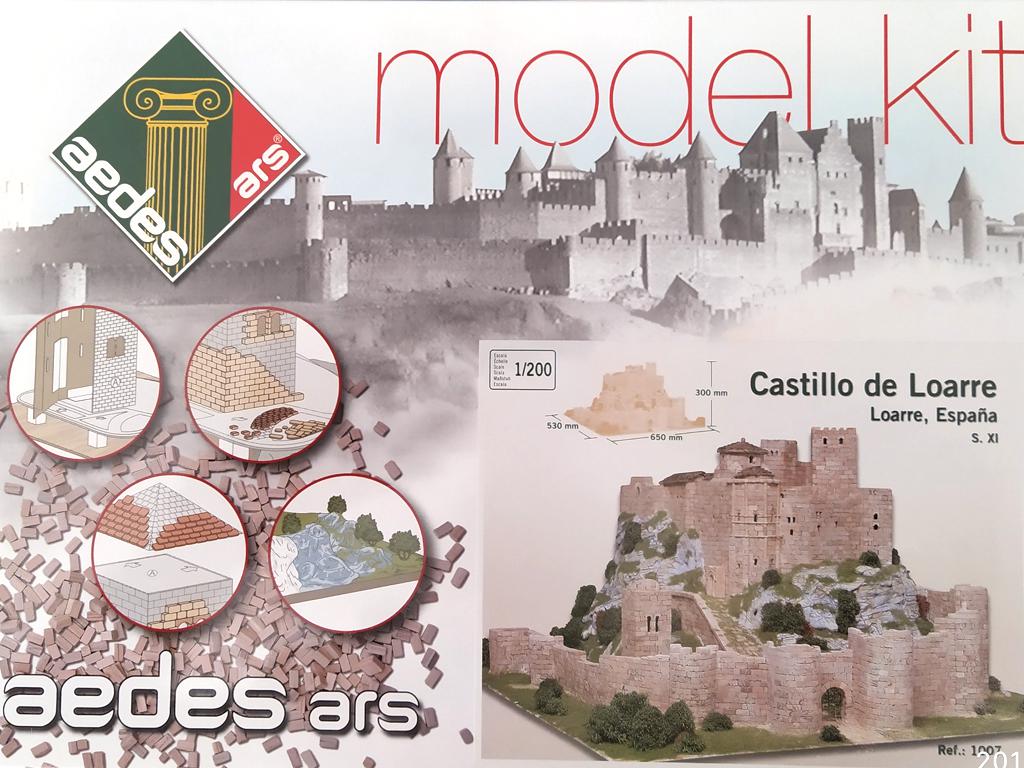
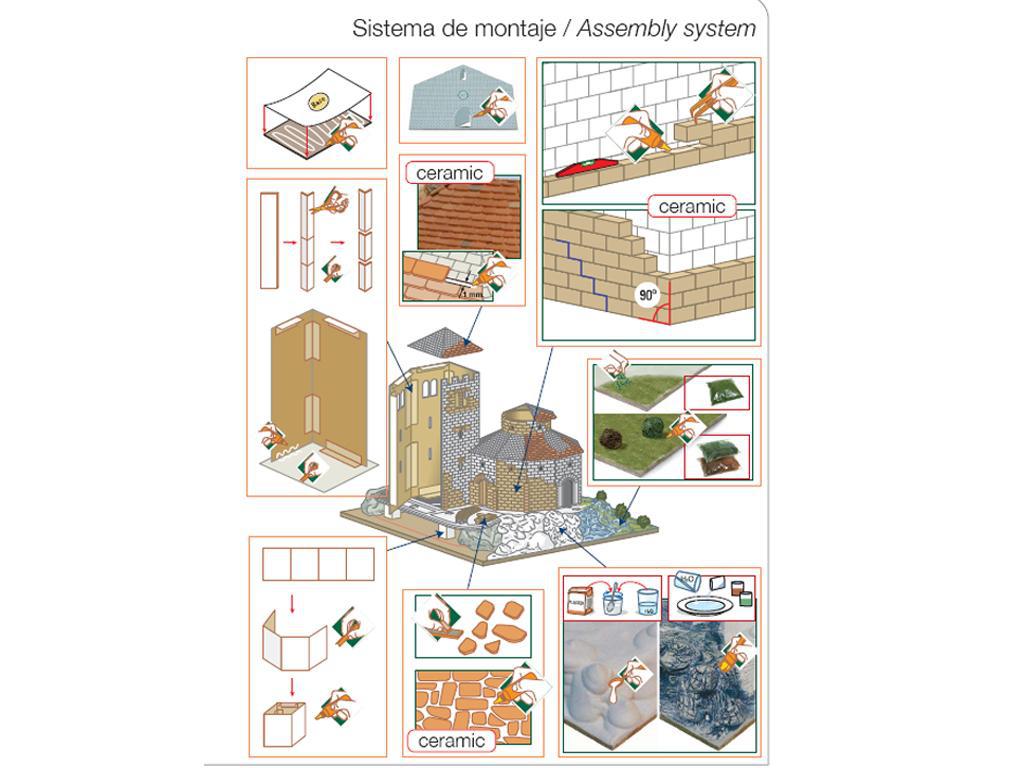
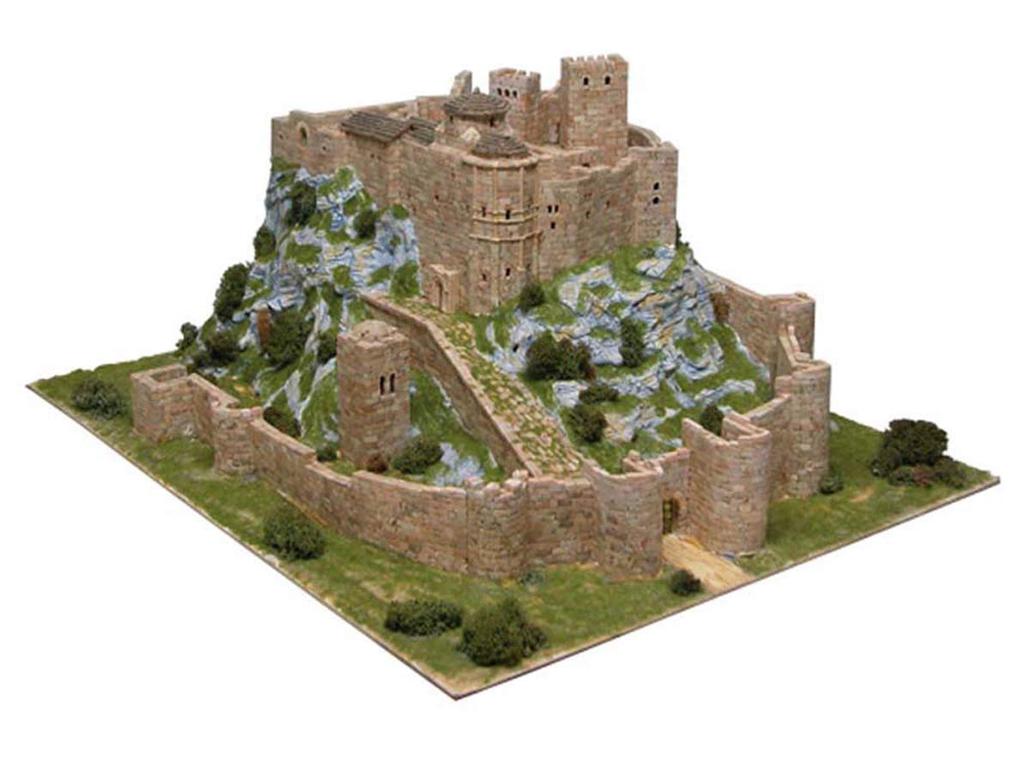
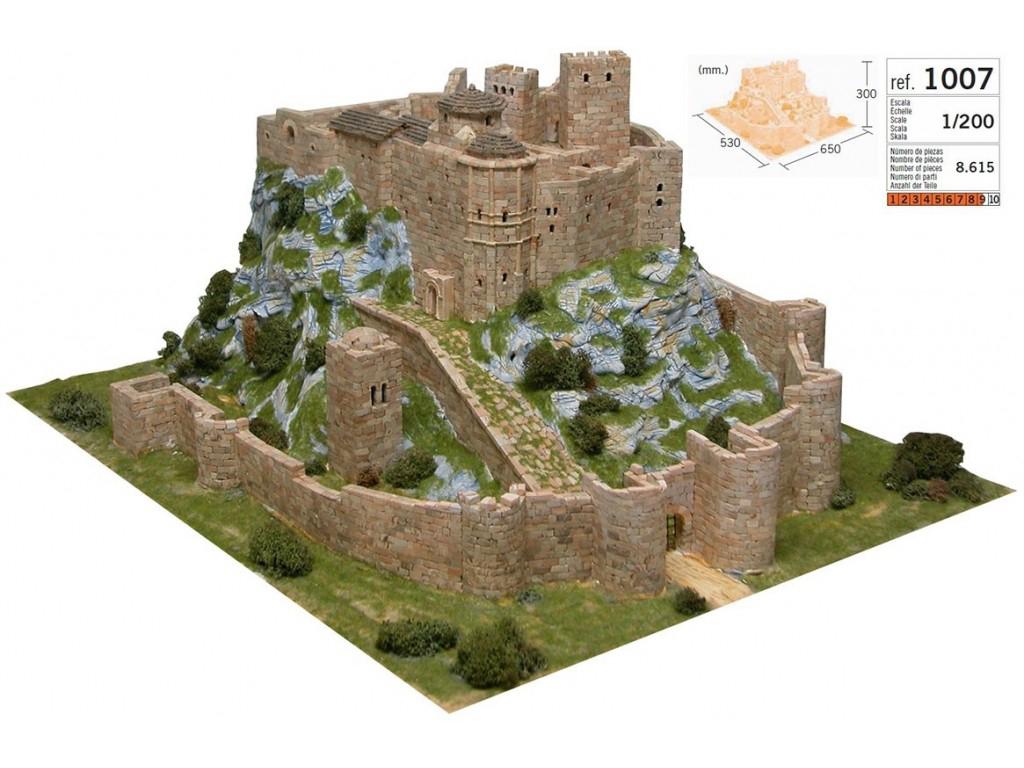
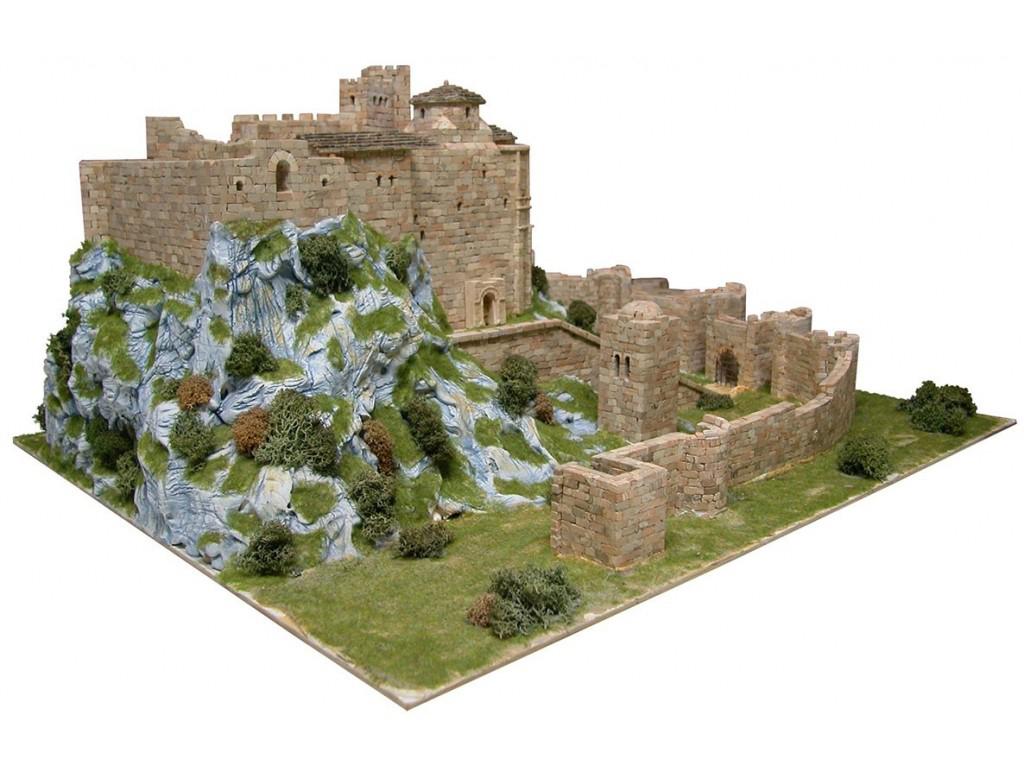
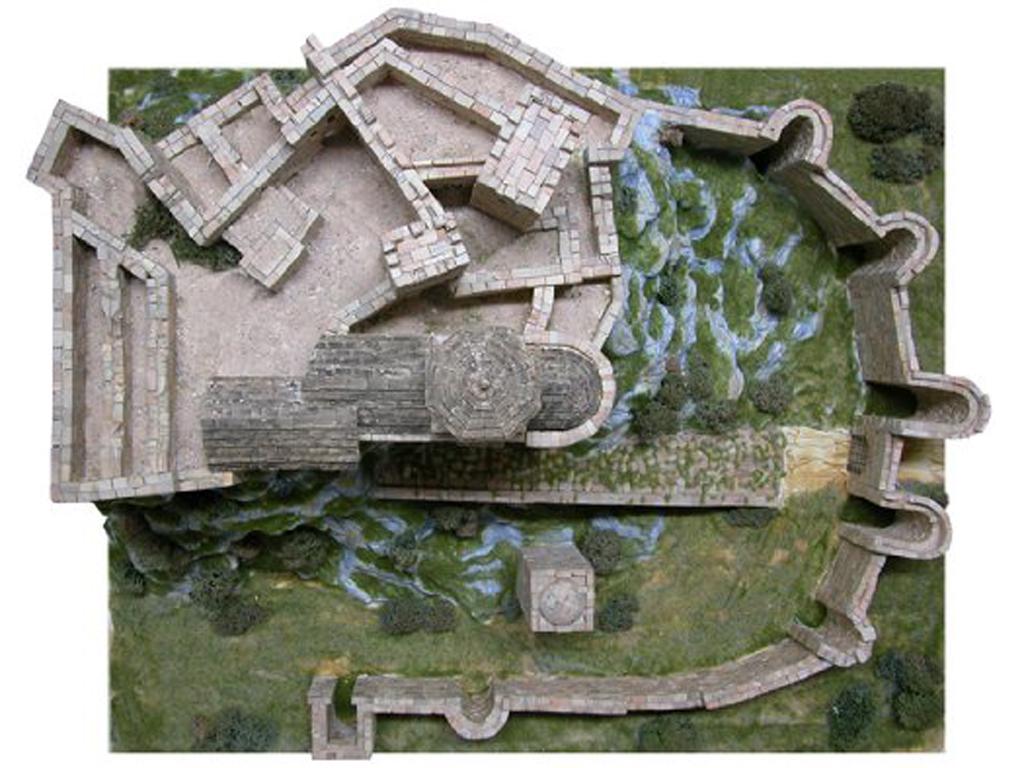
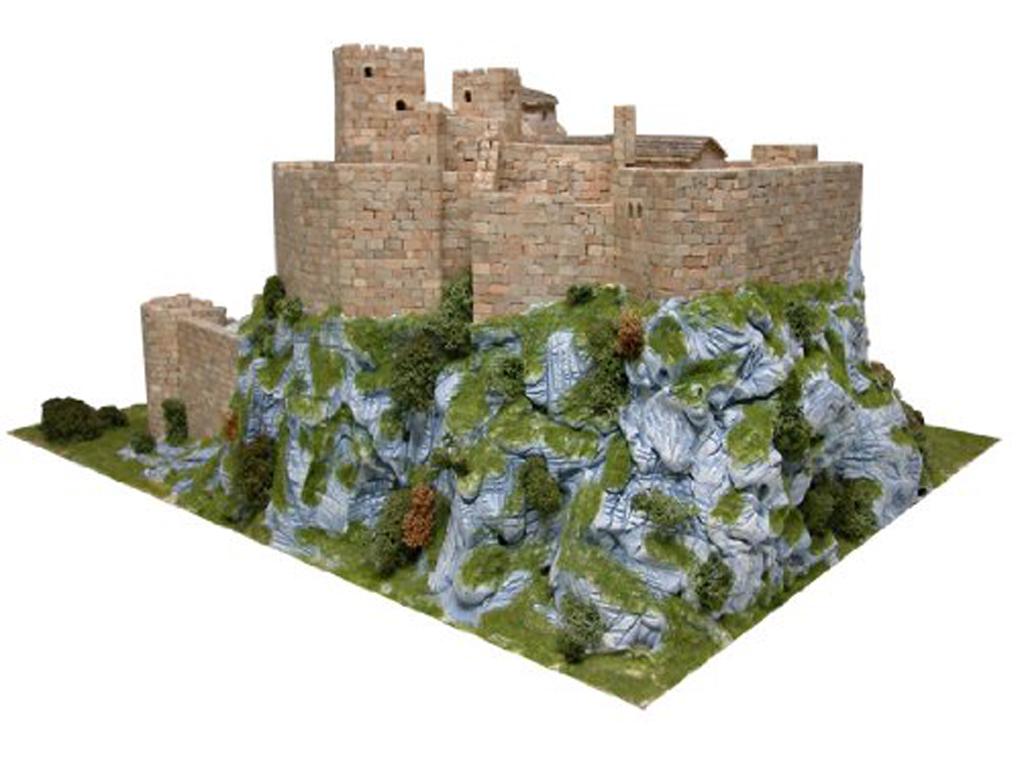







Ref.: AEDE-1007

Loarre Castle. Spain-S.XI
Caracteristics
Scale: 1/200 Approx. Nº of pieces: 8.600 Difficulty degree: 8.5/10 Sizes (Mm.): 530 x 650 x 300
History
The Castle of Loarre is close to the town of the same name, in the Huesca Province, 30 kilometres east of its capital, in the western Pyrenees.
It is the oldest and most important Romanesque fortified castle in Spain. Between 1015 and 1023, Sancho III the Elder of Navarra ordered the royal building, the Chapel and the Queen's Tower, the parade ground and military quarters to be built over the ruins of a Roman castle, as well as the residence for the servants; after his death Ramiro I added the Keep, 22 metres high and from where one can take in views of the whole region, the valley or "Hoya de Huesca".
Conquered by the Muslims, it was finally recaptured by Sancho Ramírez, who extended and strengthened the fortress.
The walled precinct covers one hectare of land, which gives one an idea of its grandness in size.
The wall has a square-shaped tower and six irregularly positioned circular ones; entry to the precinct is through a door that opens between two of them. Inside we come across a square-shaped albarrana tower bridge.
After the steep climb, we reach the main doorway into the building, adorned with beautiful Romanesque capitals, the Kings' Gateway.
The Keep has five floors and still conserves its defensive battlements. On the inside of the castle is the 12th-century Romanesque church of Santa Maria, built over a rectangular crypt and which possesses a semicircular apse with barrel vaulting; one can enter the church from the crypt of Santa Quiteria, also inside the fortress.
A stroll around the castle is an attractive tour of towers, passageways and semicircular arches until reaching the Queen's Balcony, in the area of the royal palace.
The material most employed in this construction is sparingly worked masonry stone.